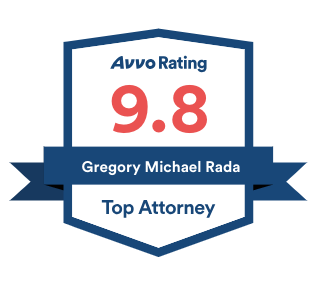Secondary Conditions Affect Employability
Posted by Gregory M. Rada | February 04, 2025 | Firm News
When dealing with disability claims, veterans often face the challenge of managing not only their primary condition but also secondary conditions that arise as a result of the original injury or illness. These secondary conditions can significantly impact employability and may play an influential role in securing a Total Disability based on Individual Unemployability (TDIU) claim. Our VA TDIU lawyer is a veteran for veterans. Attorney Greg understands secondary conditions, how to establish a service connection for them, and how to present them in a TDIU claim to make a positive difference in getting the compensation and benefits you deserve.
Common Secondary Conditions That Impact Employability
Many veterans with service-connected disabilities experience secondary conditions that further hinder their ability to work. These secondary conditions often stem from the physical, emotional, or psychological toll of the primary disability. Some of the most common secondary conditions include depression/anxiety, sleep disorders, cardiovascular issues, and metabolic disorders.
Veterans with chronic pain, mobility issues, or severe injuries often develop secondary mental health conditions like depression and anxiety. For instance, someone with a service-connected orthopedic injury such as a knee or back problem may experience chronic pain, which can lead to frustration, social withdrawal, and eventually depression or anxiety. These mental health conditions can make it even more challenging to find and maintain employment.
Veterans suffering from chronic pain or PTSD may also experience sleep disturbances, such as insomnia or sleep apnea. Pain can make it difficult to rest, while PTSD-related nightmares or hypervigilance can disrupt sleep. Poor sleep quality can lead to daytime fatigue, decreased concentration, and diminished physical and mental performance, all of which can severely affect employability.
Physical conditions, such as orthopedic or musculoskeletal problems, can sometimes strain the cardiovascular system. For example, veterans with joint or back issues might develop gait abnormalities that put excess pressure on the heart and circulatory system, leading to cardiovascular problems like hypertension or heart disease. These secondary cardiovascular conditions can limit a veteran’s ability to work, especially in physically demanding jobs.
When a veteran’s mobility is limited due to a service-connected injury, they may experience weight gain, leading to secondary conditions like diabetes, arthritis, or hypertension. Being unable to exercise or move freely often results in a more sedentary lifestyle, which can negatively impact overall health and contribute to conditions that make it difficult to remain employed.
Establishing Service Connection For Secondary Conditions
To receive VA benefits for secondary conditions, it’s essential to establish a clear link between the primary service-connected disability and the secondary condition. The VA requires medical evidence to support this connection. It’s not enough to simply report the symptoms or the existence of a secondary condition. You must prove that the condition is “approximately due to or the result of” the primary disability.
The process of establishing service connection for a secondary condition usually involves:
- Medical opinions and evaluations
- Causal relationship evidence
- Consistent medical records that show the progression of your injuries
Leveraging Secondary Conditions In A TDIU Claim
Total Disability based on Individual Unemployability (TDIU) is a benefit that veterans may be eligible for if their service-connected disabilities prevent them from securing or maintaining substantially gainful employment. Secondary conditions can be instrumental in building a stronger TDIU claim, as they can directly impact your ability to work.
When submitting a TDIU claim, secondary conditions should be presented as part of the overall argument that the veteran is unable to work. The more evidence provided showing how secondary conditions worsen the primary disability, the more likely the claim is to be successful. Our TDIU lawyer can help you avoid common mistakes when filing a claim. He will connect the dots between how the primary and secondary conditions combine to prevent you from holding gainful employment.
Medical Evidence Needed For A TDIU Claim
To maximize the chances of a successful TDIU claim, it’s essential to provide comprehensive medical evidence that demonstrates how both primary and secondary conditions contribute to your inability to work. This includes:
- Statements from healthcare providers who can testify to how the combination of conditions affects the veteran’s employability.
- A detailed explanation of job limitations due to both physical and mental health issues, showing why the veteran cannot work in any capacity.
- Employment records or a statement showing that the veteran has not been able to hold a steady job due to their disabilities.
- Vocational assessments that evaluate the veteran’s employability in light of their disabilities.
Building A Strong Case Based On Secondary Conditions
Our lawyer can help you build the strongest possible case for both secondary conditions and a TDIU claim. We can assist in gathering the necessary medical records, obtaining expert opinions, and crafting a compelling argument that demonstrates the full impact of your disabilities on your ability to work. If you are struggling with a combination of primary and secondary conditions that prevent you from securing or maintaining employment, consulting with Gregory M. Rada, Attorney at Law can help you pursue the benefits you deserve. As a veteran himself, Greg understands how difficult it can be to file a claim with the VA. If you are unable to maintain employment due to one or more of your service-connected disabilities, call today to arrange a free consultation. Don’t wait to get the help you need to get the benefits you deserve.








